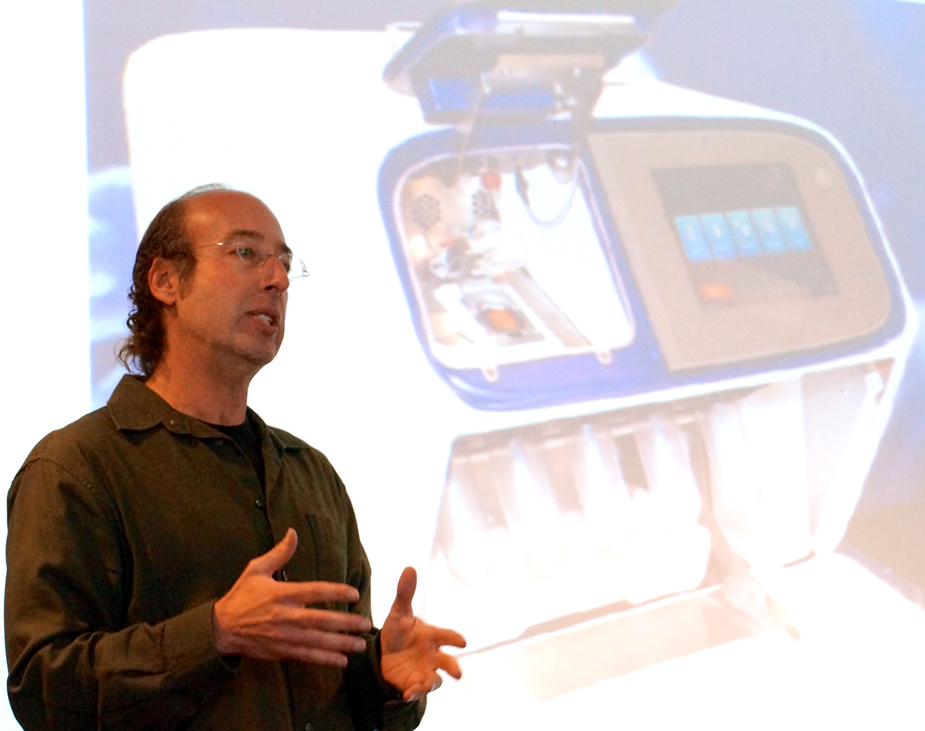
BRAIN Symposium Showcases Breadth of Research at UC Santa Barbara


It was standing room only at UC Santa Barbara's Brain Research through Advancing Innovative Neurotechnologies (BRAIN) Initiative Symposium. Students, postdoctoral scholars, and professors crowded into the room to hear 20 UCSB researchers give brief synopses of their work and explain how it relates to President Obama's BRAIN Initiative.
Ambitious in scope, the BRAIN Initiative aims to give "scientists the tools they need to get a dynamic picture of the brain and better understand how we think and how we learn and how we remember," said President Obama in his April 2 announcement of this bold new research endeavor. To that end, approximately $100 million has been earmarked for the initiative in the White House's Fiscal Year 2014 Budget to help researchers find new ways to treat, cure, and even prevent brain disorders, such as Alzheimer's disease, epilepsy, and traumatic brain injury (TBI).
The daylong symposium included a broad spectrum of research activity on campus. Eight distinctly different departments — chemical engineering; chemistry and biochemistry; computer science; communications; mechanical engineering; molecular, cellular, and developmental biology; physics; and psychological and brain science — were represented.
Craig Montell, Duggan Professor of Molecular, Cellular, and Developmental Biology (MCDB) and Neuroscience, who uses fruit fly models, said, "Animal behavior is predictable. If you know the genetic makeup of an animal and you know the sensory input — at least on a population basis — you should be able to predict behavior. What we're really interested in is understanding the molecules, the cells, and the circuits that underlie the behavior."
Ambuj Singh, professor in the Department of Computer Science and Biomolecular Science and Engineering, emphasized the important role of network science, a new and emerging scientific discipline that examines the interconnections among networks types: physical or engineered, information, biological, cognitive and semantic, and social. "We're looking for small pieces of logic that can explain networking," said Singh, who has only recently turned the focus of his study to the detection of network biomarkers.
"Over the course of the time I've been here at UCSB, we've collaborated with lots and lots of people on campus and most of them have been outside of biology," said Stu Feinstein, MCDB professor and co-director of the Neuroscience Research Institute (NRI). "And that's because bringing together the sophisticated tools that chemists and engineers and computer scientists have really helps you go places with biological life science questions that you can't do with standard molecular biology." Feinstein's research on tau protein relates to both Alzheimer's disease and TBI.
Jean Carlson, a professor in the Department of Physics, heads the Complex Systems Group at UCSB. Part of her work revolves around multi-scale processes in decision-making. "We want to connect all that we're learning about the brain to behavior," she said in her presentation. Her group also conducts dynamic graph analyses of how the brain changes in activity, and collaborates with Scott Grafton's Action Lab in the Department of Psychological and Brain Sciences to reveal precursors of learning.
Carlson and Grafton's joint work is just one example of the myriad collaborative efforts already taking place on campus. Kenneth S. Kosick, MCDB Harriman Professor of Neuroscience and co-director of the NRI, said that UCSB "fosters an atmosphere that is conducive to collaboration. Yes, this is about the BRAIN Initiative, but it's also about what everyone can do together and what we can do campuswide to make neuroscience really strong."
"I think that the level of enthusiasm and the quality of work that is already being done on campus is extraordinary," said Meredith Murr, director of research development in the Office of Research. "The possibilities for new research coming out of this event are endless.
"It was standing room only and I think that really shows how enthusiastic the faculty is about the brain and about collaborating with campus colleagues," she added. "We don't need to go to another university with a medical school, for example, to do brain research."
Related Links



